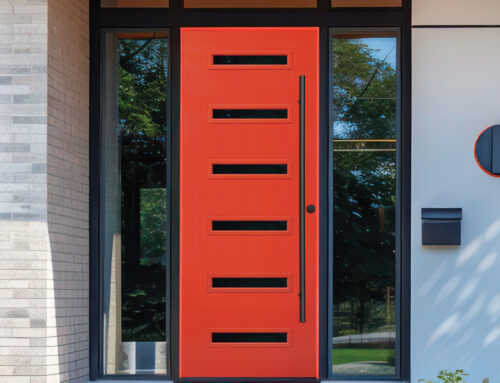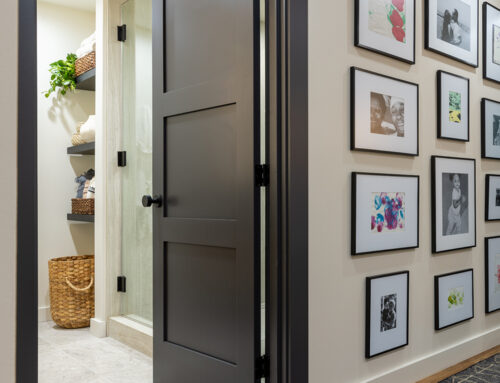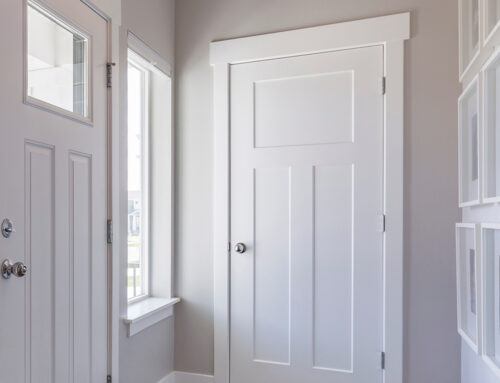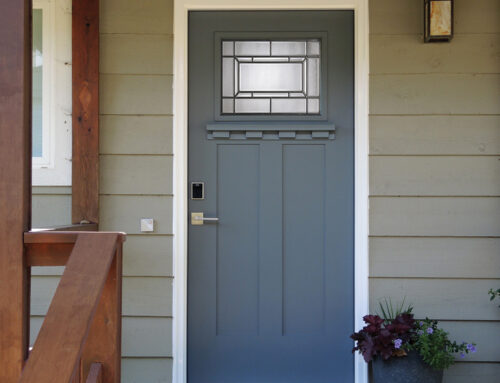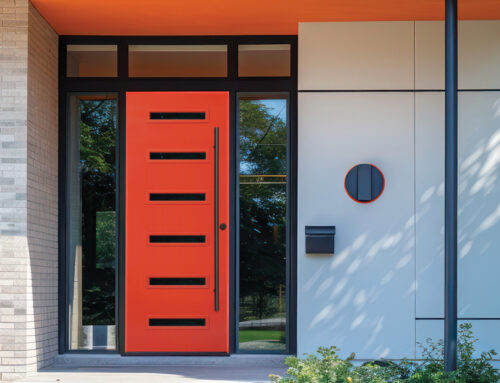Patios, porches, and decks can enhance your home in a number of different ways. They help you enjoy the outdoors, provide more space for entertaining, increase natural light, and can add a touch of beauty or “WOW” factor when done right. If you are planning on adding one of these features to your home or are remodeling an existing outdoor space, you should also give some thought to finding the right doors from Trimlite. When trying to decide what style of door will work best in your home, the choice often comes down to French doors vs sliding doors. Both are great options but differ in significant ways when it comes to their appearance, durability, maintenance, and usability. Here, we’ll be going over each in detail to help you make the best decision. Consider this the ultimate guide to French doors vs sliding doors!
French doors
French doors are simply a pair of hinged doors that are mostly made of glass panes to let in light. They can swing inward or outward depending on your preferences, but they always swing open from the center. Each can be opened and closed independently of the other. If you have limited space, French doors can be configured so that only one of the doors is operable. Check out our selection of Trimlite French doors here for some examples.
Pros
- Very classic, traditional, and elegant design.
- More secure than other types of glass doors.
- Can be customized with different woods, colors, finishes, and styles. The arrangement and texture of glass panels can also be customized.
- Can swing in or out.
Cons
- Requires a lot more room and floor space for both doors to swing open all the way.
- The traditional feel might seem out of place in homes with a more modern style.
- A little more expensive than sliding doors.
Sliding Doors
A sliding door is simply one fixed panel that slides horizontally across a track on rollers to create an opening. The track can be made from metal, wood, or vinyl, and the door itself is typically all glass except for the frame. Sliding doors commonly have just one panel that slides, but if you have enough wall space, you can have two sliding panels.
Pros
- Requires very little floor space because the door slides open rather than swinging open.
- Sleek, modern design.
- Less expensive than French doors.
Cons
- Takes up a lot more wall space than French doors.
- Door can sometimes come off track or become unsealed over time.
- Only one lock point.
Durability and Maintenance
When it comes to the durability of French doors vs sliding doors, French doors typically have a lifespan of 30-50 years, while sliding doors usually won’t last more than 20. However, it really depends on the material you choose, and at Trimlite, we have a variety of choices.
A sliding door’s track will need to be cleaned consistently, the door itself will sometimes have to be put back on the track after coming off, and rollers may need to be replaced over time. The hinges on French doors require frequent maintenance because of how much weight the hinges are tasked with holding. When looking at French doors vs sliding doors in terms of maintenance, sliding doors actually require less than French doors.
Usability
When looking at French doors vs sliding doors in terms of usability, there really is not that much difference. Here at Trimlite, we’d give a slide edge to the French doors simply because it can get annoying trying to open and close a sliding door when it’s come off its track, but this is really up to your preferences.
The ultimate winner of the French doors vs sliding doors bout mainly depends entirely on your preferences and the design of your home. As previously mentioned, French doors have a more classic design, while sliding doors are much more modern. If you have an older, more historic home or a home with a more traditional design, French doors will likely work best. Alternatively, if your home is a newer construction, sliding doors would probably be the best choice.



